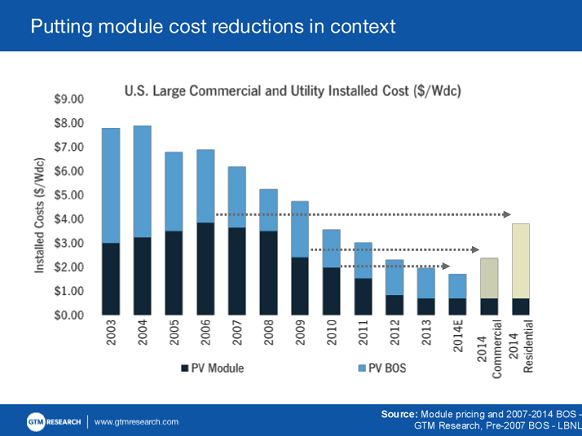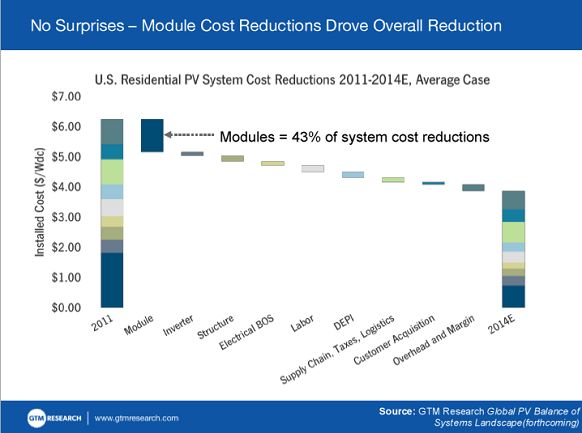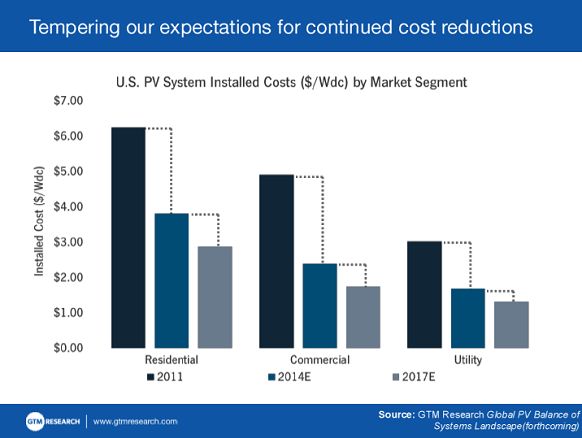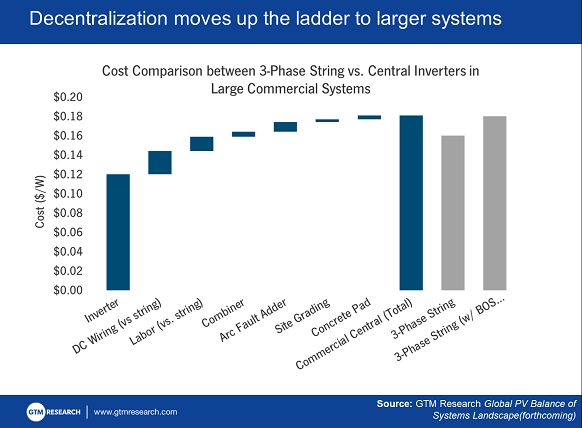Speaking to a room of 400 solar professionals, MJ Shiao, GTM Research Director, presented on the future of PV systems and technologies at this week's U.S. Solar Market Insight conference in San Diego.
"When I started in the solar industry in 2006," said Shiao, "we could buy modules for close to $4 per watt. Today, we can install a residential system [the costliest market segment] for the same price."

Residential system prices in the United States have fallen from $6 per watt in 2011 to $4 today. Module price reductions account for 43 percent of the drop in that same time frame.

Across all market segments, system costs have come down by between 33 percent and 50 percent. However, "it's a little aggressive to expect that trend to continue," cautions Shiao.
GTM Research forecasts system prices to continue to fall, but at a more moderate annual rate of about 20 percent to 25 percent over the next few years.

Source: GTM Research
Those reductions won't necessarily come from falling module prices, but will instead likely rely more on innovations in soft costs and solar balance-of-systems items like inverters and racking.
Shiao went on to describe a few technology trends shaping the inverter industry.
"We're in the age of module-level power electronics," he said. Microinverters and DC optimizers made up 55 percent of all U.S. residential systems installed in the first half of 2014. "Every major U.S. residential inverter supplier now has some form of module-level power electronics design."

Source: The Microinverter and DC Optimizer Landscape 2014: The Evolution From Market Niche to Market Success
"What is really exciting," he continued, "is that we're starting to see [module-level power electronics] creep into the commercial space with three-phase products, and module manufacturers are getting involved with AC module solutions."
This trend of decentralization is true for larger commercial systems as well. When wiring, laboring, combiner boxes and other costs are factored in for a large commercial system, a three-phase string inverter begins to look as good, if not better, than a central inverter.

Source: GTM Research
"You have to look at how your technology choices impact your total system cost," he said.
Shiao continued the second half of the presentation with trends and innovations in structural hardware. You can see the whole presentation here (starts around the 50-minute mark).
***
For more information regarding GTM Research's BOS reports and data, contact [email protected]



